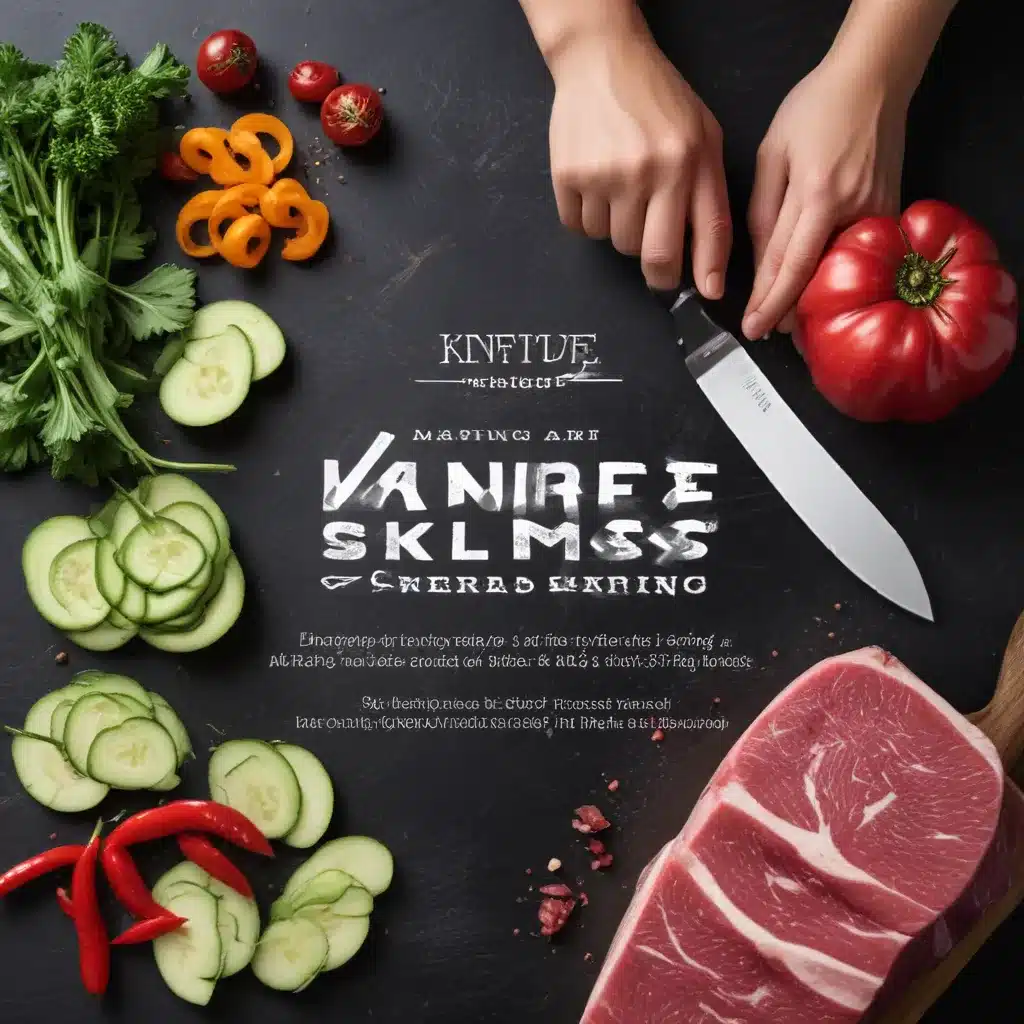
In the culinary world, knife skills are akin to a musician’s mastery of their instrument. Just as a skilled performer captivates audiences with their beautiful music, a culinary artist with exceptional knife skills can transform raw ingredients into culinary masterpieces that delight the senses. Knife talent is an essential component of culinary expertise, enabling chefs to turn simple foods into visually stunning and palate-pleasing dishes.
The Importance of Knife Skills in the Kitchen
Knife skills are the foundation upon which great cooking is built. They play a crucial role in efficiently and precisely preparing ingredients, which in turn, allows the chef to showcase their creativity and culinary flair. Mastering the art of chopping, dicing, and mincing not only elevates the aesthetics of a dish but also ensures consistent cooking and optimal flavor extraction.
Whether you’re an aspiring home cook or a seasoned professional, honing your knife skills is a worthwhile investment of time and effort. By developing a keen understanding of proper cutting techniques and maintaining your knives in peak condition, you can unlock a world of culinary possibilities and impress your guests with visually stunning and delicious meals.
Essential Knife Types and Their Uses
Before delving into the specific cutting techniques, it’s essential to familiarize yourself with the various types of knives and their intended uses:
| Knife Type | Description | Primary Uses |
|---|---|---|
| Chef’s Knife | A large, multipurpose blade typically 8-10 inches long. | Chopping, dicing, mincing, and general food preparation. |
| Paring Knife | A small, delicate blade with a sharp tip. | Peeling, trimming, and detailed work on small items. |
| Serrated Knife | A blade with a toothed edge. | Slicing bread, tomatoes, and other soft-skinned produce without crushing. |
| Boning Knife | A thin, flexible blade designed for maneuvering around bones. | Deboning meat and poultry. |
| Utility Knife | A mid-size blade, larger than a paring knife but smaller than a chef’s knife. | Versatile cutting tasks, such as slicing fruits and vegetables. |
| Santoku Knife | A Japanese-style blade with a flat edge and a broad, curved shape. | Slicing, dicing, and chopping. |
| Fillet Knife | A thin, flexible blade with a sharp point. | Filleting fish and boning meat. |
Selecting the right knife for the job at hand is crucial for achieving precise, effortless cuts and maintaining control in the kitchen.
Mastering the Essential Cutting Techniques
Now, let’s dive into the core cutting techniques that every cook should have in their arsenal:
Chopping
Chopping involves slicing ingredients into small, uneven pieces. Start by firmly grasping the knife handle and using a rocking motion to bring the blade down and back up. Maintain a steady rhythm, adjusting the speed and pressure as needed to achieve the desired chop size.
Dicing
To create uniform, small cubes, first chop the ingredient into slices, then make perpendicular cuts to create the diced pieces. The key is to ensure that all the slices are of equal thickness, allowing for even and consistent dicing.
Julienne and Brunoise
Julienne refers to slicing ingredients into thin, matchstick-like strips, while Brunoise takes this a step further by dicing the Julienned pieces into tiny cubes. These cutting techniques are often used for garnishes or to add visual interest to dishes.
Mincing
Mincing involves chopping ingredients, such as garlic or herbs, into fine, uniform pieces. The technique involves a swift, back-and-forth motion, keeping the blade in contact with the cutting board to achieve a consistent, paste-like texture.
Slicing
Slicing calls for a smooth, controlled motion, gliding the blade through the ingredient to create thin, uniform slices. Maintain a steady hand and keep the knife at a consistent angle to ensure even thickness.
Mastering these fundamental cutting techniques takes time and practice, but the rewards are well worth the effort. As you hone your knife skills, you’ll find that meal preparation becomes more efficient, your dishes become more visually appealing, and your overall culinary experience is elevated.
Maintaining and Sharpening Your Knives
Consistent and proper knife maintenance is crucial for ensuring their longevity and optimal performance. Here are some tips to keep your knives in top shape:
- Sharpening: Use a sharpening stone or electric sharpener to maintain a keen edge on your blades. Aim to sharpen your knives every few months, or as needed, to keep them slicing effortlessly.
- Honing: In between sharpening sessions, use a honing steel to realign the blade’s edge and maintain its sharpness.
- Cleaning and Storage: Always hand-wash your knives and store them safely in a knife block or on a magnetic strip. Avoid placing them in the dishwasher, as the high heat and harsh detergents can dull the blades.
- Cutting Boards: Use a sturdy, non-porous cutting board, such as wood or plastic, to prevent unnecessary wear on your knife edges.
By properly maintaining your knives, you’ll not only extend their lifespan but also ensure that you can consistently execute your cutting techniques with precision and ease.
Conclusion
Mastering the art of knife skills is akin to laying the foundation for culinary excellence. Whether you’re an aspiring home cook or a seasoned professional, developing your cutting techniques can significantly enhance your overall cooking experience and the quality of the dishes you create.
Remember, with practice and dedication, you can become a true knife virtuoso, crafting culinary masterpieces that leave a lasting impression on every plate you serve. So, sharpen your blades, put on your apron, and get ready to embark on a journey of culinary artistry.
For more tips, recipes, and kitchen insights, be sure to visit Kitchen Warrior – your go-to destination for all things related to the culinary arts.


